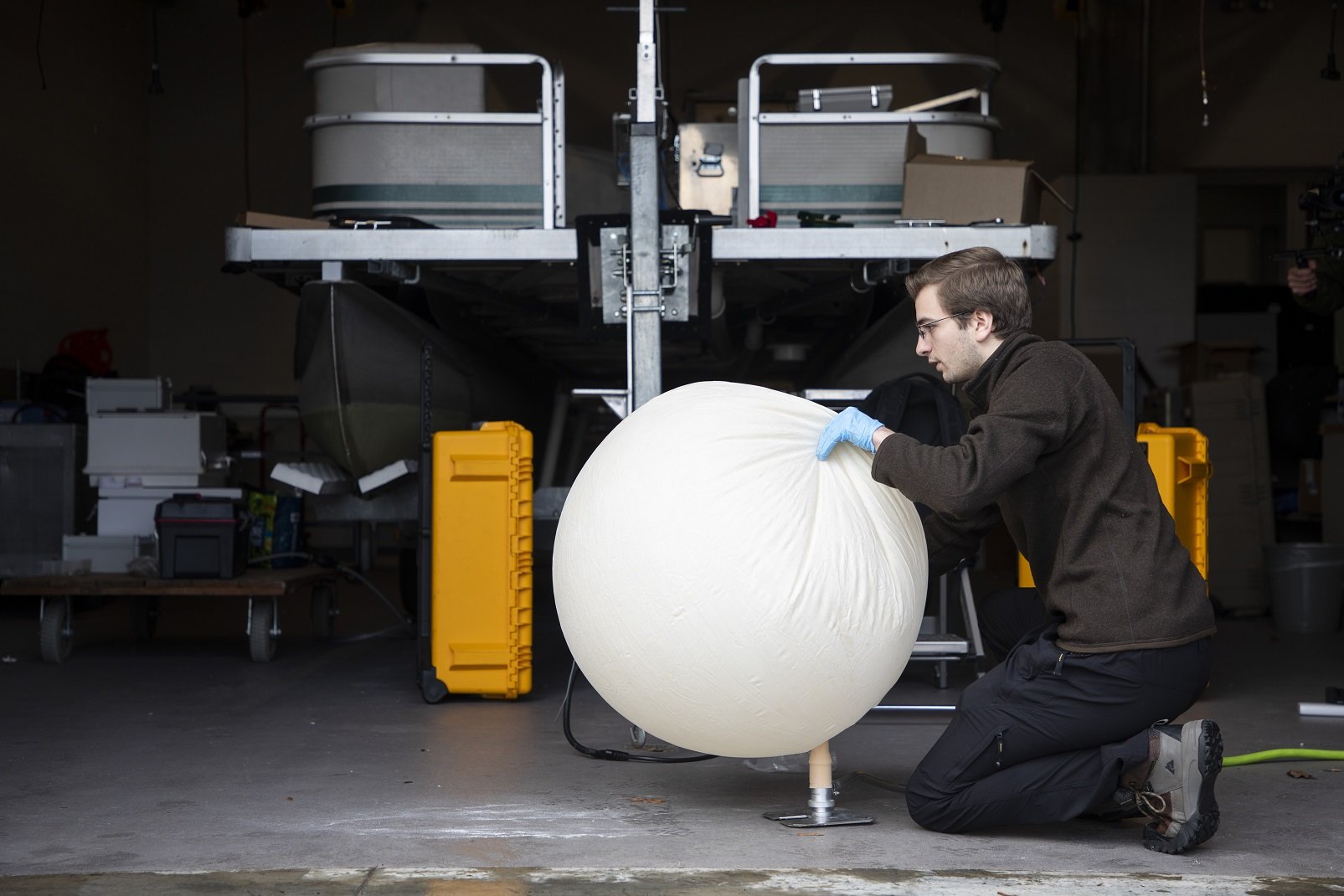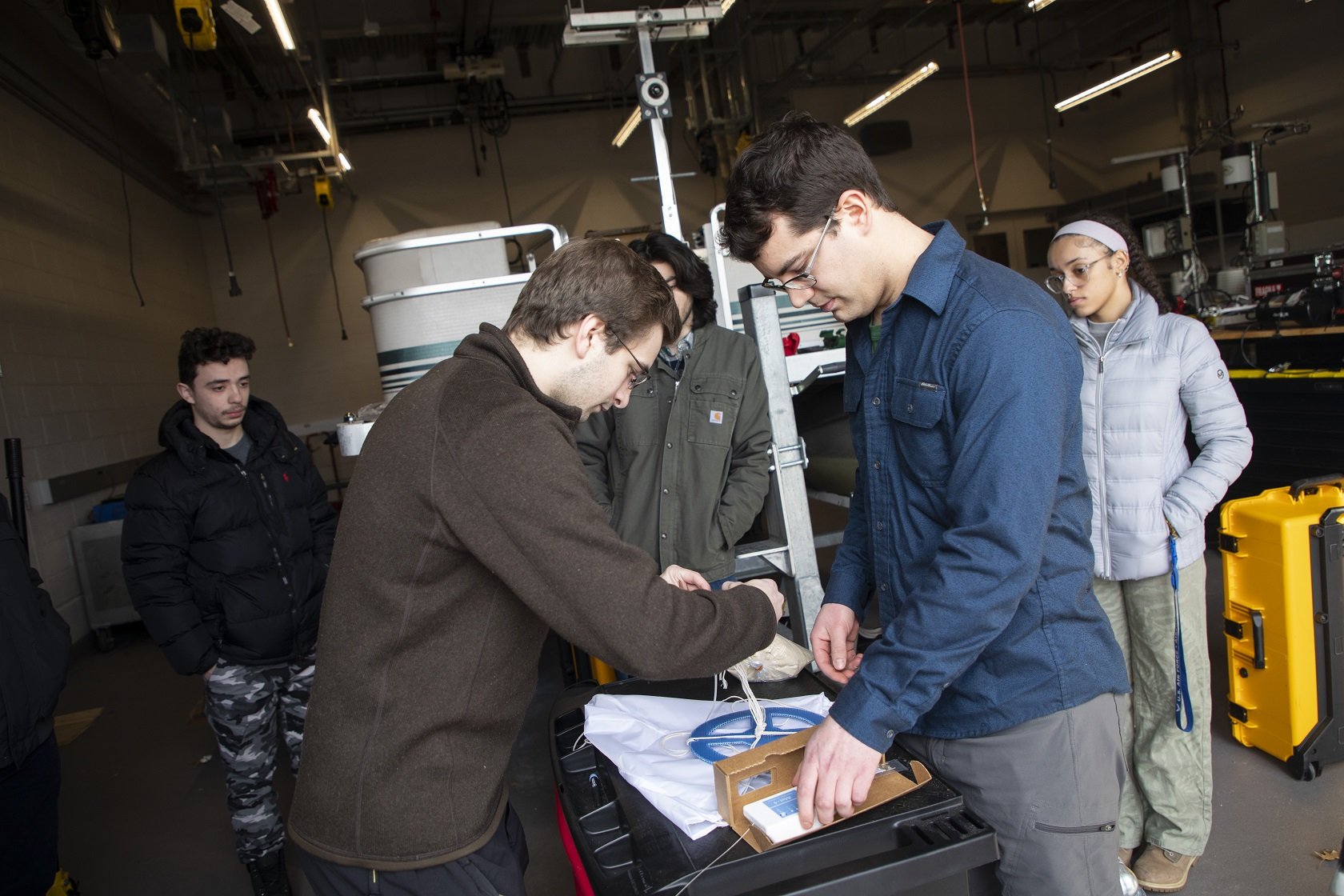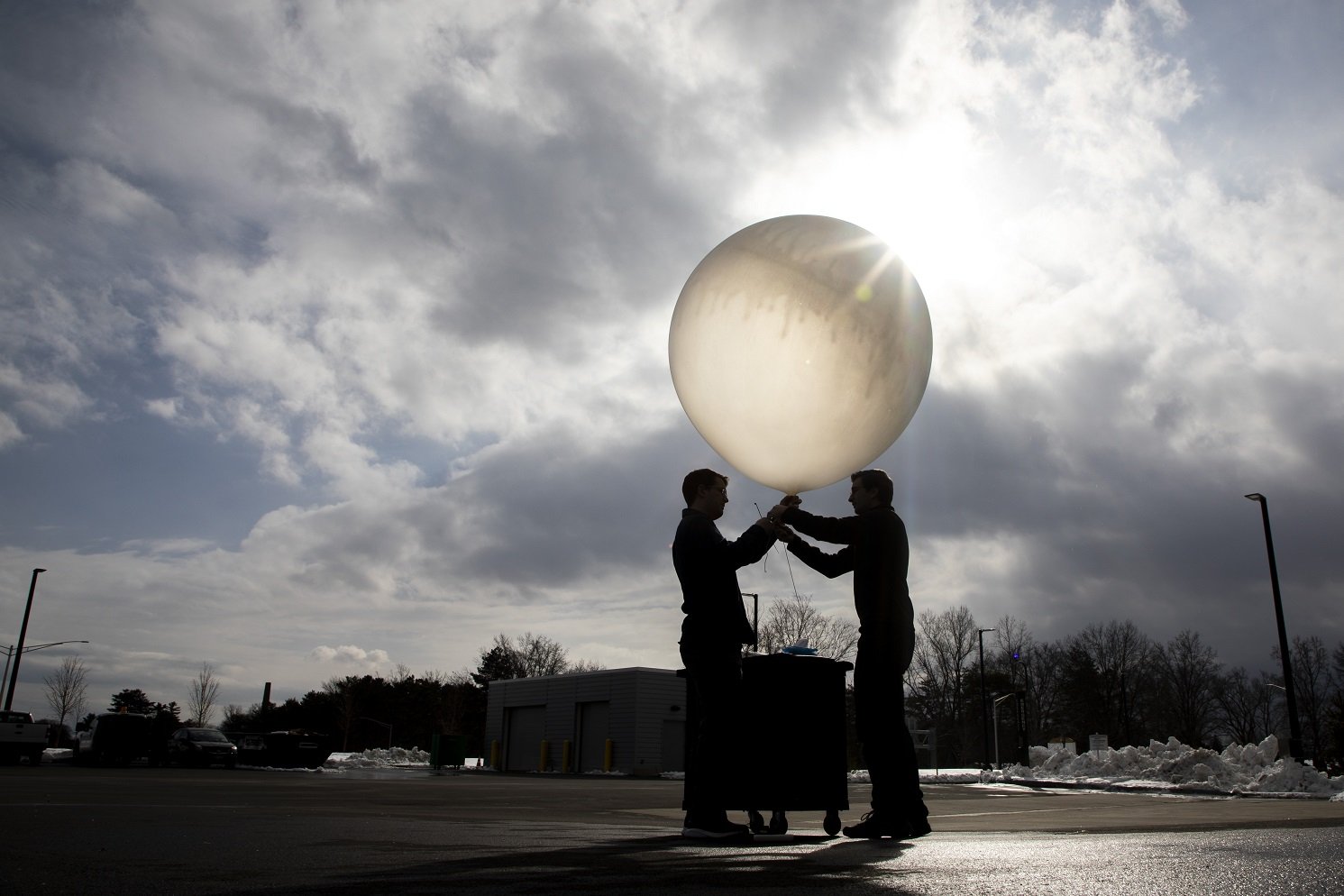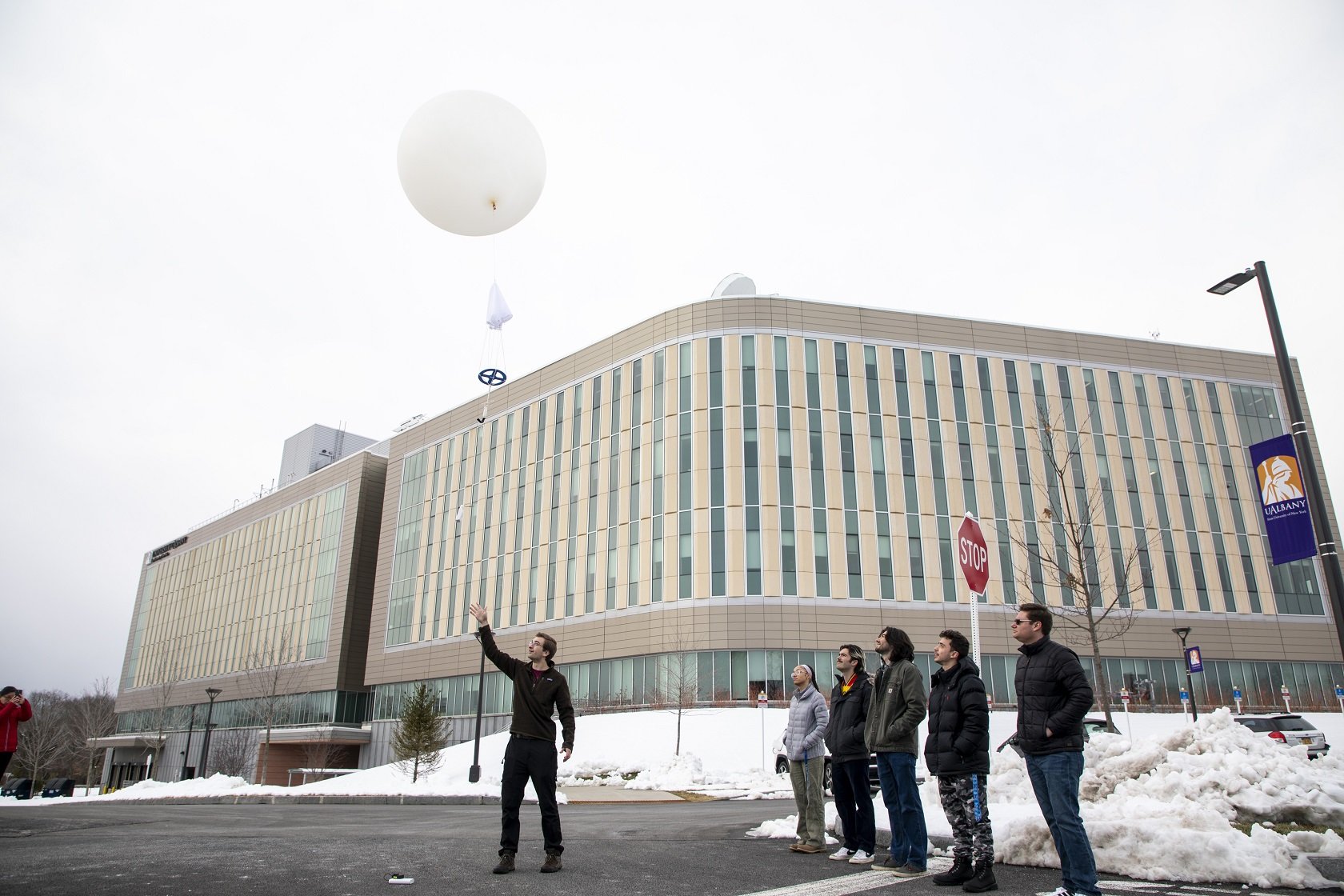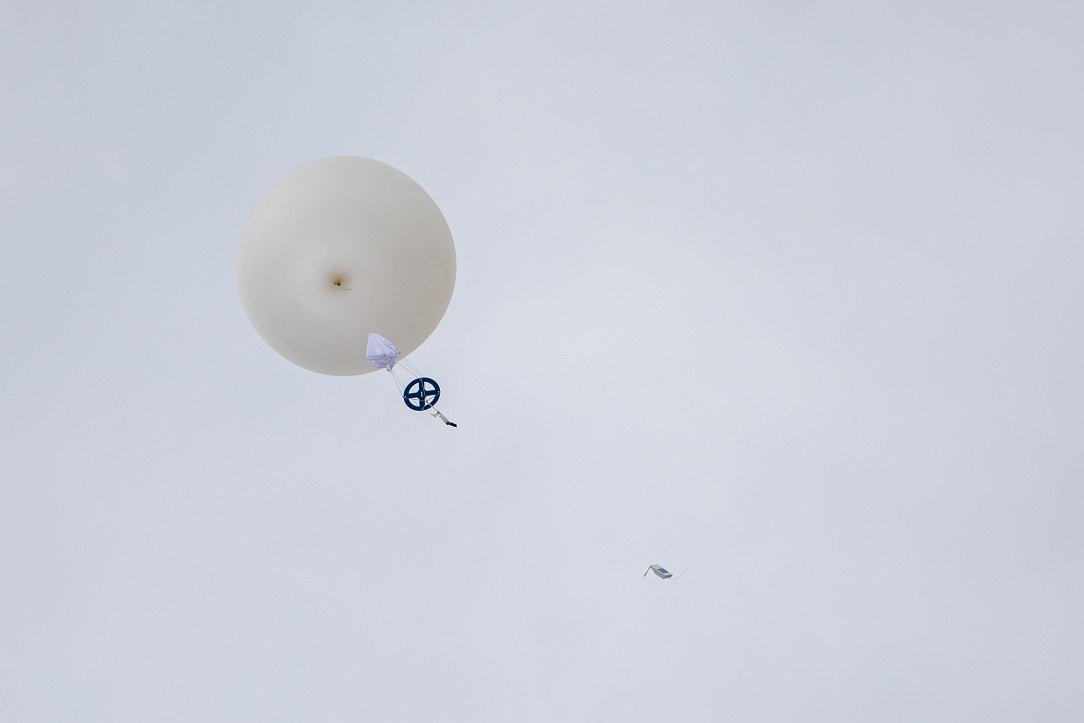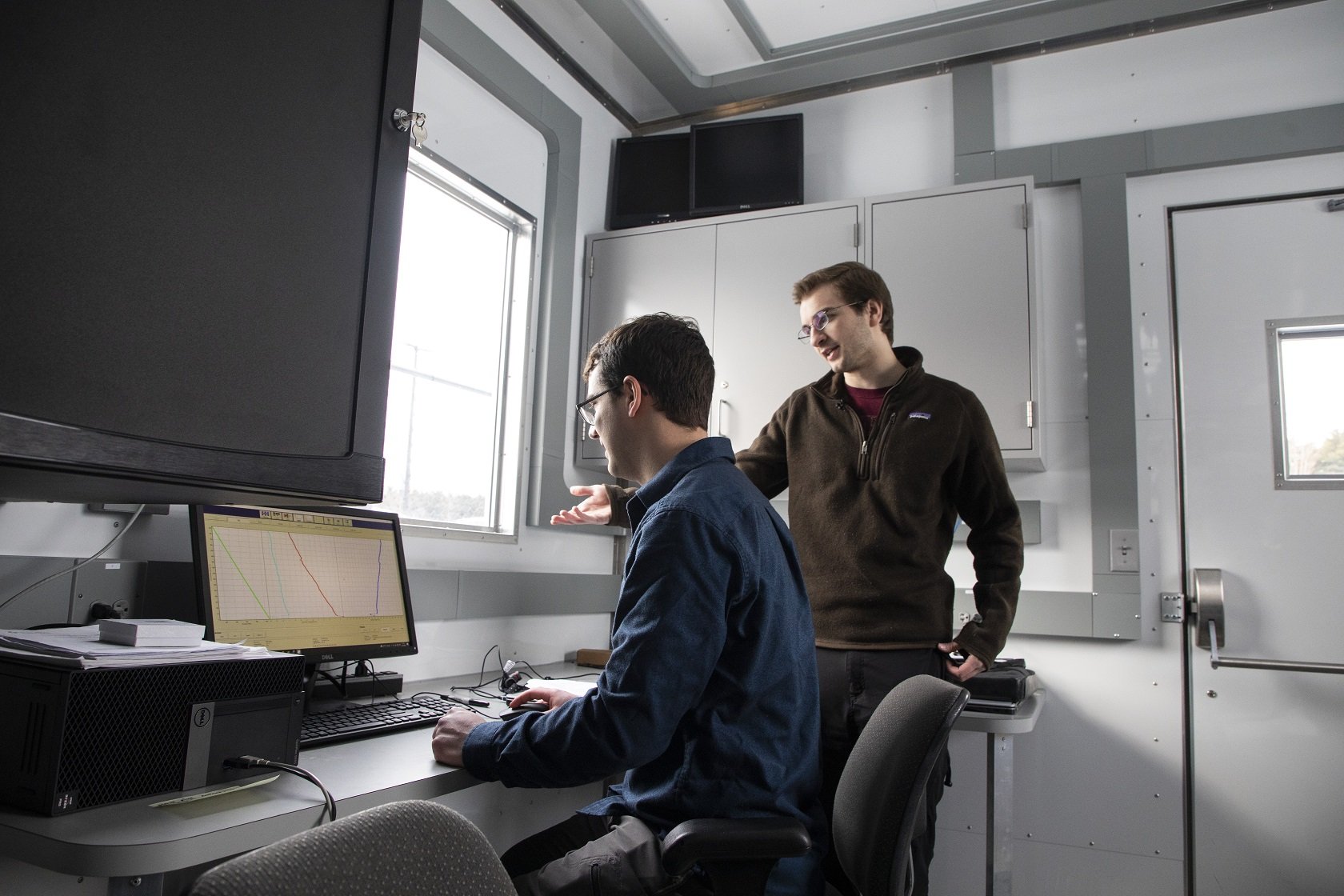UAlbany Students Help National Weather Service Balloons Take Flight
By Mike Nolan
ALBANY, N.Y. (Jan. 31, 2023) — Last month, the National Weather Service at Albany (NWS Albany) temporarily stopped daily weather balloon launches as it awaits the delivery of equipment for a new launch facility.
However, the skies above our region are still being closely watched — thanks in large part to University at Albany student researchers.
NWS Albany, which is located inside UAlbany’s ETEC research and development complex, is partnering with the Department of Atmospheric and Environmental Sciences (DAES) and NYS Mesonet to use a mobile weather balloon launching system that can help replace the daily launches until normal operations resume later this spring.
About a half dozen UAlbany student interns are launching the balloons and sharing real-time atmospheric data with the National Weather Service from the ETEC parking lot.
“After meeting with NWS Albany leadership, we developed a plan to use mobile weather balloon launching systems owned by DAES and the NYS Mesonet to partially replace the NWS Albany balloons until the new system is online,” said DAES chair and professor Ryan Torn. “This data has been designated as the ‘official’ Albany sounding and is being used in weather models. It’s a great partnership, offering our students hands-on learning and the NWS vital information for weather forecasting and modeling.”
"Our partnership with DAES and the NYS Mesonet have been very beneficial to our operations at the Albany forecast office,” added Chris Gitro, meteorologist-in-charge of the NWS forecast office in Albany. “We can't thank them enough for their support."
Weather Balloon Forecasting
Twice a day, every day of the year, weather balloons are released by the National Weather Service from 101 locations throughout the U.S. and the Caribbean.
The Albany site uses helium to lift radiosondes, small, expendable instrument packages, which are attached to balloons and measure a wide range of weather data that support forecasts — such as pressure, temperature, relative humidity and wind speed and direction. The data is transmitted to a ground computer in real time. During flights that last around two hours, the balloons can drift as far as 125 miles away and rise to over 100,000 feet (over 20 miles) up in the atmosphere.
Through the new partnership, UAlbany is providing two mobile sounding systems, one operated by Justin Minder, associate professor at DAES, and the other by the NYS Mesonet, along with helium, radiosondes and student training resources. NWS is offering technical expertise to input the data into its forecast models.
Erik Creighton, a senior atmospheric science major and NYS Mesonet intern, helped train the student team. He’s now coordinating the balloon launch schedule and troubleshooting as necessary.
“I’ve participated in a few balloon launches in the past and thought this new partnership was a great opportunity to work directly with the National Weather Service,” Creighton said. “After graduate school, my goal is to be a severe weather researcher. UAlbany has put me in a great position. The faculty in our program really care about us and want to make sure we all succeed.”
Brett Castro, a junior atmospheric science major, is a student volunteer at NWS Albany and part of the student balloon launch team.
“For pretty much as long as I can remember, I’ve wanted to be a meteorologist,” Castro said. “As a volunteer at the National Weather Service, I’ve assisted on a few balloon launches. Now, I get to lead them. UAlbany has offered so many opportunities and experiences that are preparing me to be a professional in this field.”
High-Tech Profiler Network
Along with supporting weather balloon launches, the NYS Mesonet is offering additional, real-time atmospheric data for meteorologists and emergency managers in New York from its specialized profiler network.
The profilers use laser and radiometric technology to scan the atmospheric boundary layer, the lowest part of the troposphere that is directly influenced by Earth's surface. The network, which includes 17 stations around the state, sends critical data about temperature, wind speed and direction and moisture content back to NYS Mesonet headquarters on UAlbany’s campus every five minutes.
The Mesonet profilers make nearly 5,000 daily observations that can be incorporated into forecasting models and help with the deployment of new renewable energy, including both onshore and offshore wind and solar.
“We are excited to grow our partnership with the National Weather Service,” said Chris Thorncroft, director of the NYS Mesonet and UAlbany’s Atmospheric Sciences Research Center. “This collaboration is a prime example of how research universities and government agencies can work together for the public good.”
Normal balloon launch operations will resume from the roof of ETEC when the new launch facility is completed.
Read more about the new partnership in the Albany Times Union.
Photos: Partick Dodson






